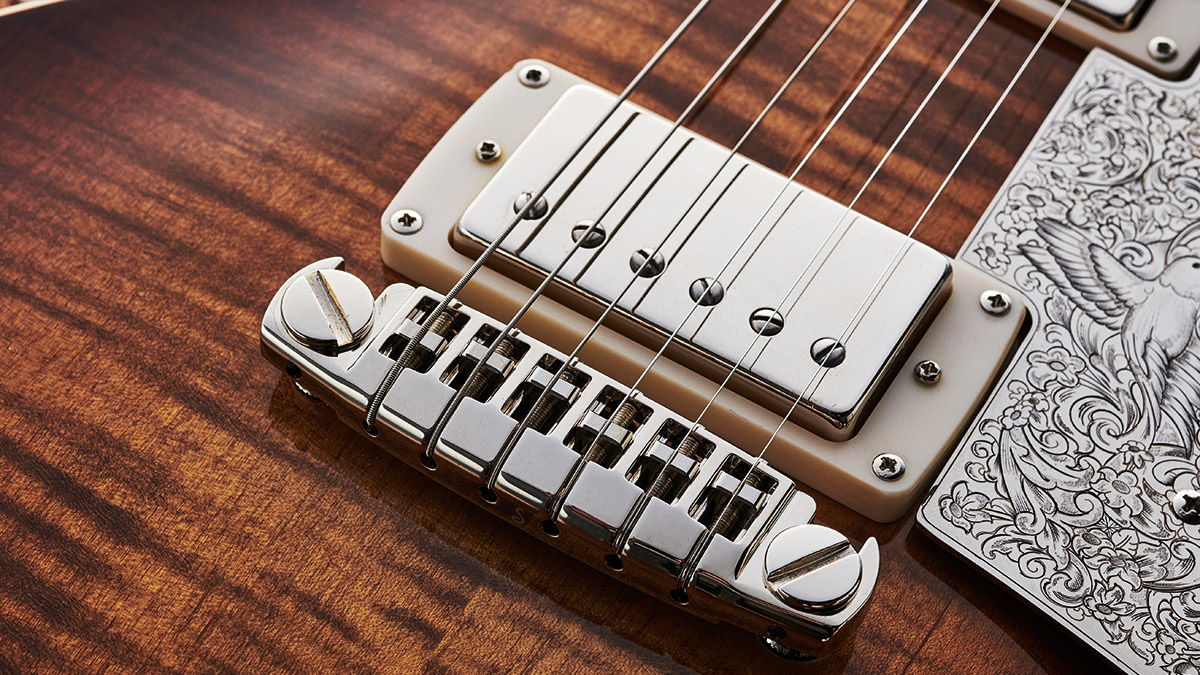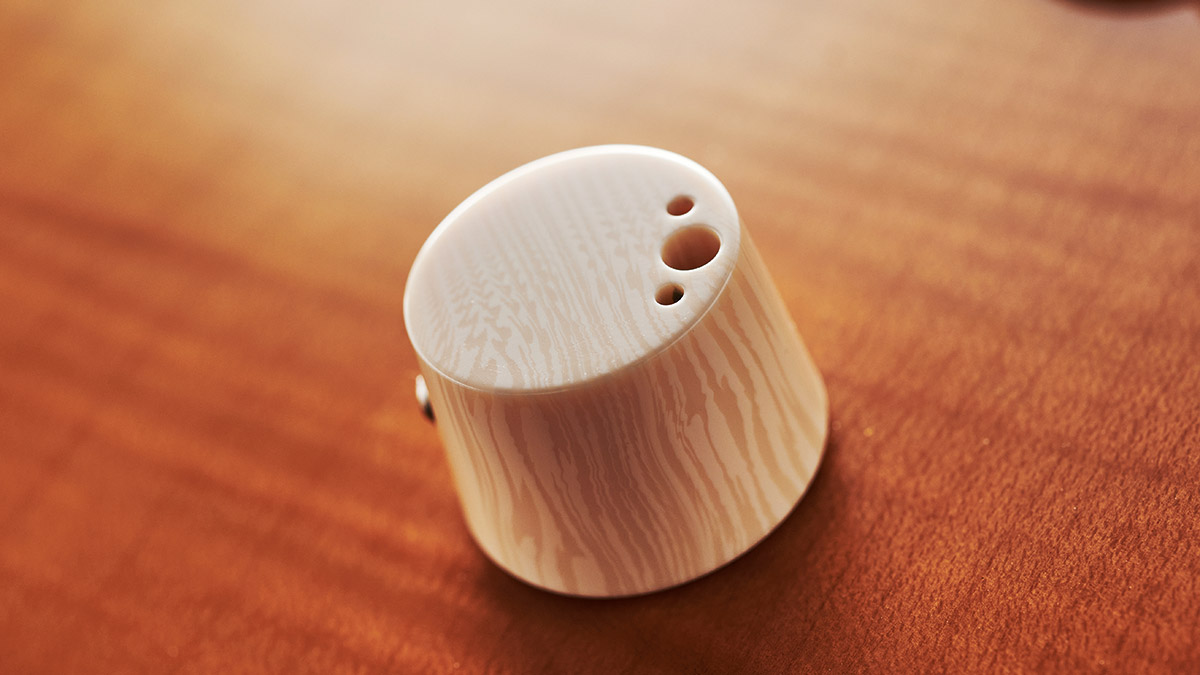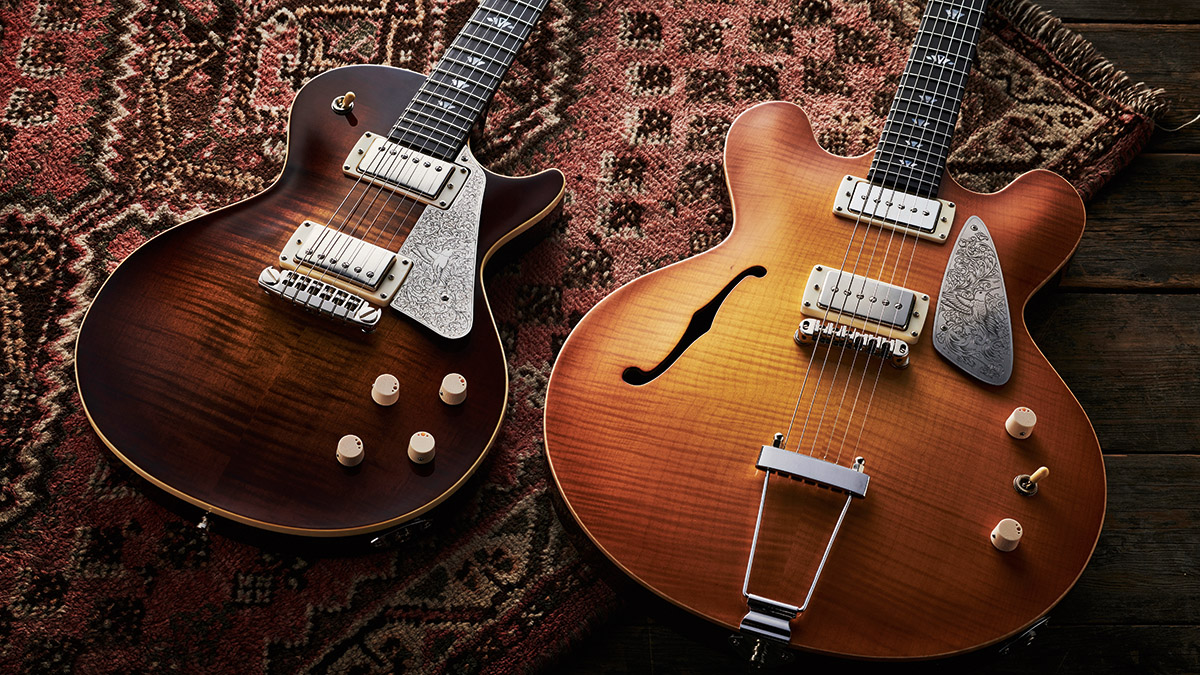Guitar World Verdict
The Renegade feels exceptional. We’ve played single-cuts twice this price that simply don’t offer the depth, resonance and the dynamics that we hear here. The Paradise 73 isn’t far behind, if at all – a connoisseur’s thinline that almost reaches back into jazz-age archtop heritage that can move effortlessly from smooth to searing.
Pros
- +
The Renegade has a smart build.
- +
We like the chambered lightweight design.
- +
Superb hardware and engraving.
- +
A good-playing and sounding single-cut.
- +
Like the Renegade, the Paradise build is good.
- +
It has the playability and sounds to match.
- +
A very versatile piece, too.
Cons
- -
Minor details still need to be addressed.
- -
Base designs are derivative.
You can trust Guitar World
We can’t quite remember there being such a vibrant time for the homegrown guitar-making industry. While the actual output in terms of numbers is minuscule compared with the big guns, the increasing choice is providing a serious option to those well-established custom shops, especially with many of them being severely back-ordered.
Of course, many of the UK’s more established makers are in the same boat; it seems that demand even at the high-end of guitar craft is insatiable. And here’s another option: Robson Guitars.
While the inspirations are obvious, Robson’s take on a couple of classics combines a high level of craft, some very nice details and scope for options, too. Both review samples are effectively production prototypes, but the first thing you notice about our Renegade is its light weight thanks to the chambering on the striped sapele back, which appears to be one piece. It’s immediately inviting.
The top carve is very violin-like with superb dishing around the edges, and showy but not overdone figuring to the maple top. We measured overall depth at 54mm, 45mm at the rim, a little thinner than its inspiration, which no doubt helps with the weight. At 8.5mm around the edge, the top’s single-ply edge binding is slightly deeper than a typical modern Les Paul, but ties in nicely with the proprietary pickup rings and those neat grained ivoroid control knobs – typical of the craft at Robson.

Of course, we also have Robson tuners here, with almost round grained ivoroid buttons and open backs showing off the classy metalwork (mainly stainless steel). And then there’s the superbly detailed hand-engraving by Greg on the pickguard, the truss-rod cover and the rear electronics cavity cover. These plates are also stainless steel and not aluminium or mild steel.
Greg’s work recalls the style of Tony Zemaitis, whose metalwork was often engraved by Danny O’Brien – and the artistry here is really well done, quite beautiful. It adds a touch of opulence to the Renegade that’s continued with those classy Art Deco-style mother-of-pearl fingerboard inlays on the dense black ebony fingerboard, which has ebony binding and a white coach-line stripe by the bound edges.

Pickups and controls follow the recipe closely, but the two-piece bridge you might expect is replaced here with a Schaller Signum wrapover that’s fully adjustable for intonation and is locked in place by two nuts that sit under the bridge on each threaded post. That aspect is a little tricky to adjust, but it’s nicely engineered and really seems to enhance the lively, vibrant acoustic response.
All the latest guitar news, interviews, lessons, reviews, deals and more, direct to your inbox!
The Paradise 73 might retain the outline of an ES-335, but all the woods are solid – the maple top has a subtle, delicate flame and a very light-coloured, lightly ’bursted top colour.
The sapele back, again very striped, is heavily chambered, leaving a hollowed centre block that extends just past the bridge. It results in a guitar that’s a little heavier than the Renegade but not really overweight – we’ve played and tested ES-335-style thinlines that are a similar weight and heavier.

There’s only one f-hole on the bass side, and the combination of the bridge and (rather generic-looking) trapeze tailpiece, not to mention just two controls rather than four, creates a different look to its inspiration. Again, the truss rod cover and the almost teardrop-shaped pickguard are engraved by Greg, although here the rear cavity cover is sapele, not engraved metal.
The bridge is the same that Taylor uses on its T3 guitars, with lockdown roller saddles and grub screws in front and behind the posts that lock everything in place. Rather like that Schaller, it’s a little involved to set up, but once done there are no rattles or vibration loss.
The slightly different Robson tuners are a work of art here with keystone buttons and modern screw bushings, and a single screw attachment on the back. Conversely, both guitars use rather generic chromed-metal ‘football’ jack plates, but these will be replaced on the production models with engraved plates.

Feel & Sounds
The body size obviously has a major impact on the different feels of these two instruments, yet the one-piece necks, which both have small volutes under the truss rod access cavities, feel pretty similar – and this is reflected in their dimensions.
The Renegade’s artful dress doesn’t overshadow its exceptional feel
The Renegade’s slightly flat-backed and full-shouldered version of a relaxed C measures 21.1mm at the 1st fret, 22.3mm by the 12th; the Paradise 73 is virtually identical in feel and size. However, while both have generous nut widths of 43.8mm (Renegade) and 44.8mm (Paradise), the string spacing on the Renegade is a little more cramped at 34.5mm, as opposed to the 37mm spread of the Paradise, while the bridge spacing is the opposite: very slightly narrower on the Paradise. Devilishly small details, but – like the setup – they do affect the playability.
Both fingerboard radiuses are slightly more cambered at 254mm (10 inches) than the saddle radius (305mm/12 inches), but the setups feel good, though we did just tweak the relief on both and the string height on the bass side of the Paradise to give it a little more air. There’s a little rounding to the heels on both, which adds comfort, a hint of modernism that continues with the dual-action truss rod and decent-sized frets – measuring approximately 2.38mm wide by 1.25mm high.

From its acoustic response, which is very ‘new guitar’ and lively, the Renegade comes across as slightly mid-scooped plugged in, and we sense that is as much about its chambering as it is the pickup voicing.
Compared with our Burstbucker-equipped Les Paul Classic, it sounds a little more polite with less LP grind to the voice, a little brighter and nodding towards a Deluxe’s mini-humbuckers. There’s nothing wrong with that, of course, and there’s a good quality to the sound that can easily be bundled into the PAF ballpark.
That said, a little more clarity to the neck wouldn’t go amiss and a touch more grind on the bridge, either. On its own, however, it has plenty of merit, not least as an engaging player. It’s a pretty cool piece.

The Paradise 73 actually sounds a little bigger, too, and somewhat magnified. That slightly crisper single-coil edge, and what we hear as a wider voice with a little more depth, suits cleaner amp tones on the one hand – especially jazzier styles where the depth and clarity on the neck pickup alone sounds very good, though not overdone.
There’s some honky bite at the bridge, too, as we introduce a little bluesier amp crunch and some pretty big rootsy rhythm voices. Stylistically, it might have the edge on the Renegade, and, in our tests, seemed to suit cleaner voicings from jazz to jangle and quite a bit more. It’s extremely pedalboard‑friendly, too.

Verdict
As we’ve described, both guitars here are effectively production prototypes: they’re perfectly fine pieces with a few details (such as those output jack sockets and the headstock outline) that will have changed by the time you read this. But there’s more than enough to illustrate the intent as the Robson team chases down those final tweaks, and it’s abundantly clear that these guys mean business.
The Renegade feels exceptional. Its artful dress doesn’t overshadow the sort of single-cut that’s hard to pigeonhole: it’s about as far from a lumpen boat-anchor as you can get and actually reminds us just how good this dish can taste.
Put another way, we’ve played single-cuts twice this price that simply don’t offer the depth, resonance and the dynamics that we hear here. Its more Deluxe-like voicing gives it a valid place in any collection. The Paradise 73 isn’t far behind, if at all – a connoisseur’s thinline that almost reaches back into jazz-age archtop heritage, but, like any good example of the style, can move effortlessly from smooth to searing.
If you’re into the craft of the luthier, you can add Robson to your list. We look forward to hearing more.


Specs
Robson Renegade

- PRICE: £3,200 (inc case)
- ORIGIN: UK
- TYPE: Single-cutaway, chambered body hardtail electric
- BODY: Chambered striped sapele with figured maple top
- NECK: Quarter-sawn mahogany, glued-in
- SCALE LENGTH: 628mm (24.75”)
- NUT/WIDTH: Bone/43.8mm
- FINGERBOARD: Ebony, custom inlays, 254mm (10”) radius
- FRETS: 22, medium
- HARDWARE: Schaller Signum adjustable wrapover bridge, Robson open-gear stainless-steel tuners with antique faux-ivory buttons, Schaller strap locks
- STRING SPACING, BRIDGE: 52mm
- ELECTRICS: 2x Robson covered Alnico V humbuckers, 3-way toggle pickup selector switch, individual pickup volume and tone controls
- WEIGHT (kg/lb): 3.74/8.14
- OPTIONS: Call for details and prices
- RANGE OPTIONS: The other single-cut in the range is the Trailblazer (from £1,800) and will be available with fully engraved metal front circa £6,000
- LEFT-HANDERS: Not currently
- FINISHES: Burnt Toffee (as reviewed), more colours on request – gloss nitrocellulose to both body and neck
Robson Paradise 73

- PRICE: £3,600 (inc case)
- ORIGIN: UK
- TYPE: Double-cutaway, heavily chambered solid wood thinline
- BODY: Chambered striped sapele with European figured maple top
- NECK: Quarter-sawn mahogany, glued-in
- SCALE LENGTH: 628mm (24.75”)
- NUT/WIDTH: Bone/44.8mm
- FINGERBOARD: Ebony, custom inlays, 254mm (10”) radius
- FRETS: 22, medium
- HARDWARE: Roller saddle bridge, trapeze tailpiece, Robson open-gear stainless-steel tuners with antique faux-ivory keystone buttons, Schaller strap locks
- STRING SPACING, BRIDGE: 50.5mm
- ELECTRICS: 2x Robson covered humbucking-sized P-90s, 3-way toggle pickup selector switch, individual pickup volume and tone controls
- WEIGHT (kg/lb): 4.04/8.9
- OPTIONS: Call for details and prices
- RANGE OPTIONS: The Dream 17 (£8,000) is the only archtop in the current range. Another double-cut, the solidbody Reiver, starts at £2,800
- LEFT-HANDERS: Not currently
- FINISHES: Amber Fade (as reviewed), more colours on request – gloss nitrocellulose to both body and neck
- CONTACT: Robson Guitars

Dave Burrluck is one of the world’s most experienced guitar journalists, who started writing back in the '80s for International Musician and Recording World, co-founded The Guitar Magazine and has been the Gear Reviews Editor of Guitarist magazine for the past two decades. Along the way, Dave has been the sole author of The PRS Guitar Book and The Player's Guide to Guitar Maintenance as well as contributing to numerous other books on the electric guitar. Dave is an active gigging and recording musician and still finds time to make, repair and mod guitars, not least for Guitarist’s The Mod Squad.

